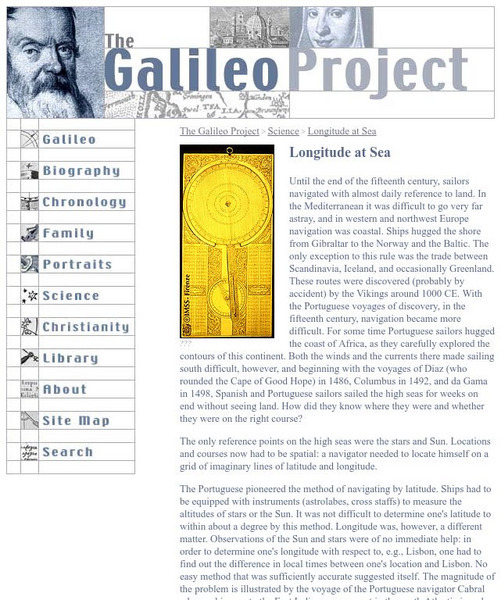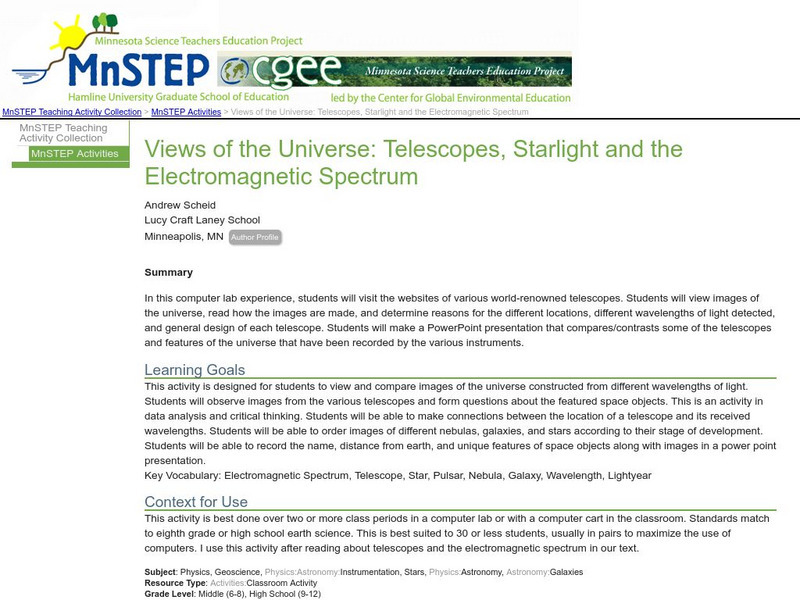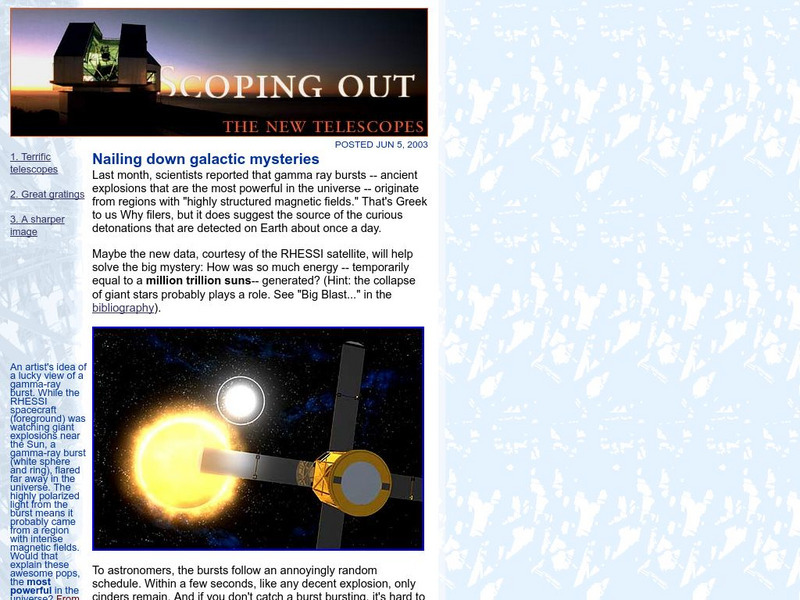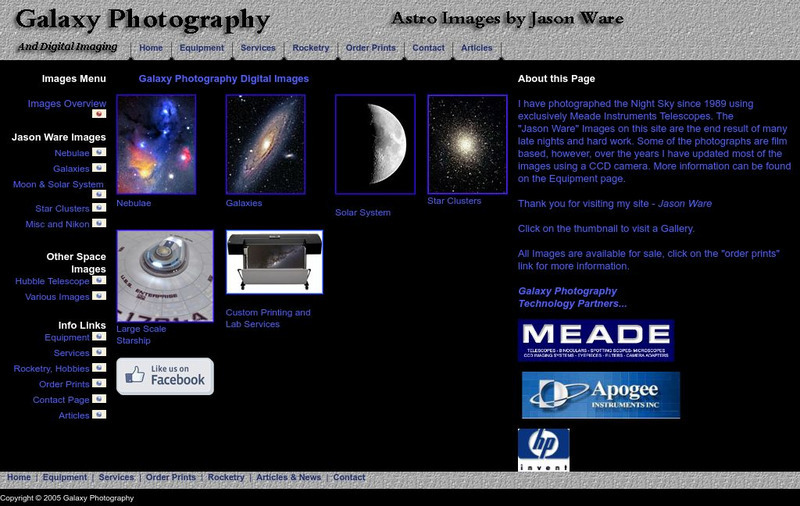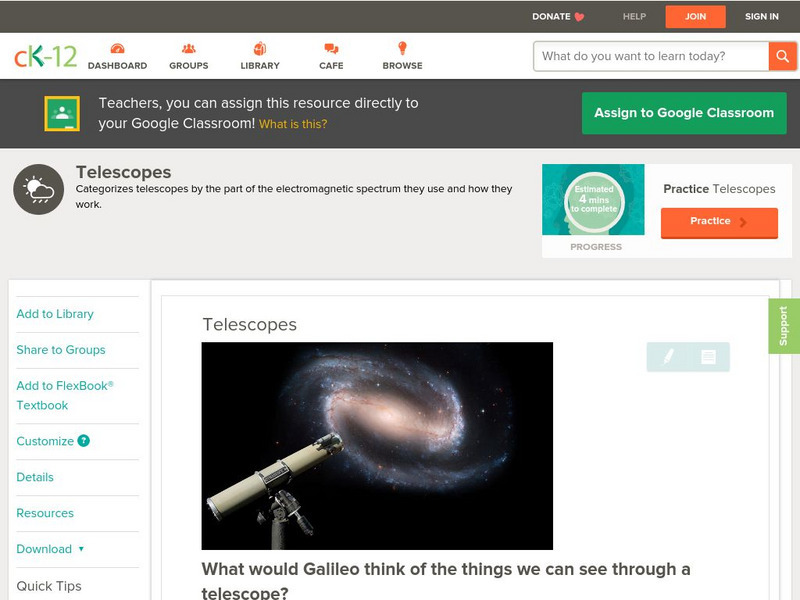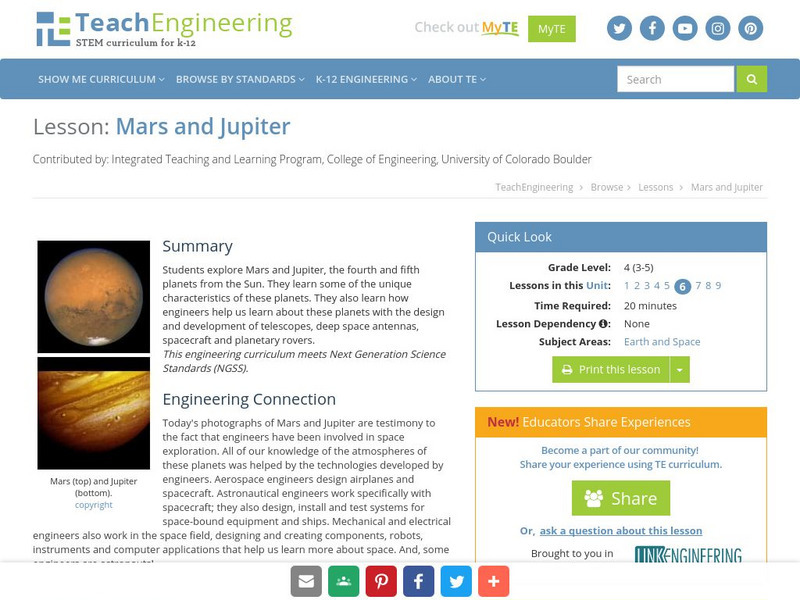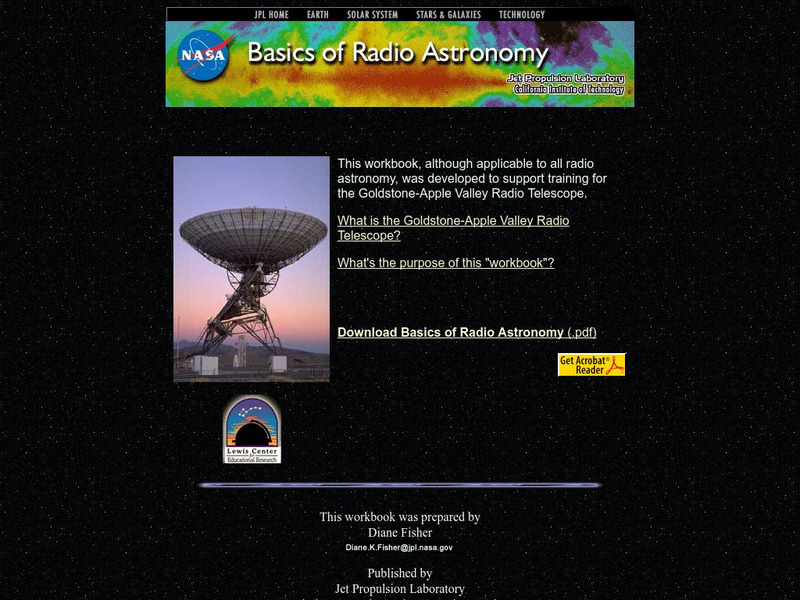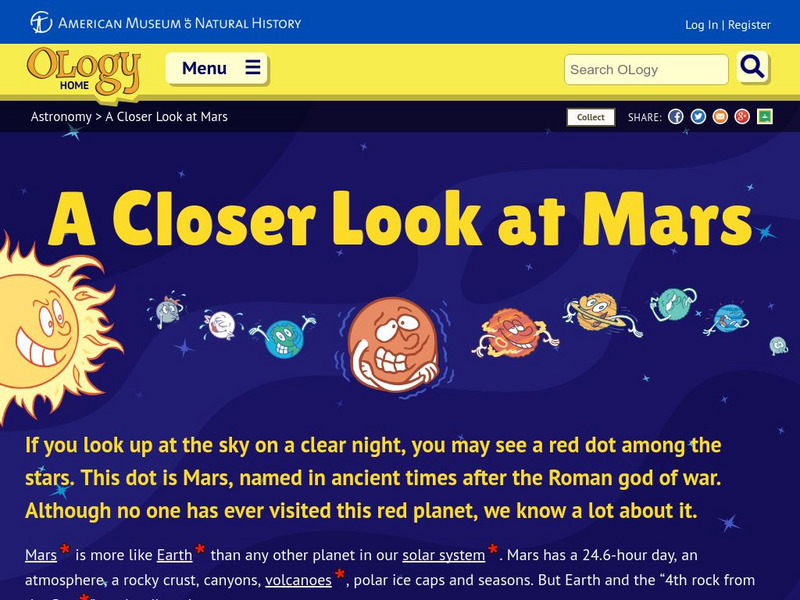Rice University
Galileo Project: Longitude at Sea
This site from the Galileo Project of the Rice University provides an in-depth look at the historic problems figuring out longitude. Links are provided throughout this article along with pictures, making this a great site to check out.
Rice University
Galileo Project: The Telescope
This site from The Galileo Project of the Rice University provides an in depth history of the telescope and it's invention and growth over time. Too detailed for an Elementary student, but a great resource for an Elementary teacher.
Science Education Resource Center at Carleton College
Serc: Views of the Universe: Telescopes, Starlight, Electromagnetic Spectrum
Students visit the websites of various world-renowned telescopes, view images of the universe, read how the images are made, and determine reasons for the different locations, different wavelengths of light detected, and general design...
Ministerio de Educación (Spain)
Ministerio De Educacion: Instrumentos Auxiliaries Modulo I Unidad 3
In this unit you will learn the main advantages and disadvantages offered by the refractor and reflector telescopes for a particular observation. You will also learn about the main types of telescopes.
Other
Antique Telescope Society
This is the homepage for the Antique Telescope Society. The page contains information about the organization, notes and images of antique telescopes, selected journal articles, and links to outside resources dealing with astronomy and...
University of Wisconsin
The Why Files: Terrific Telescopes
Why? File provides insight into four advances in telescope technology as well as shows how they are "improving our harvest of cosmic understanding."
Society for Science and the Public
Science News for Students: Small but Wise
Describes the WISE Project, which has an infrared telescope orbiting the Earth taking photographs of never before seen areas of space.
Space Telescope Science Institute
Space Telescope Science Institute
The homepage for the Space Telescope Science Institute provides a variety of resources on the James Webb Space Telescope and Hubble Telescope. Also provided is information on the institute itself, a data archive, and a wide range of...
PBS
Pbs: Rough Science Island Observatory
PBS site asks users to imagine that they are stranded on a tropical island. Provides experiments for users to calculate time at night and to identify what is in the night sky.
Other
Galaxy Photography and Digital Imaging
A site for images and how to take images of the night sky. Backed by Meade, a maker of telescopes. Good information on equipment and techniques as well.
Other
Fraser Valley Astronomers Society: Mirror Making
Directions and suggestions for making a parabolic mirror out of epoxy for use in a reflecting telescope. Links provided for sources of epoxy.
NPR: National Public Radio
Npr: New Observatory Brings Stars Closer to Earth
A radio story describing the development of the newest technology in telescopes based on an old idea. Images of the 80-acre interferometer are shown on the site.
Other
Lowell Observatory
Lowell Observatory homepage describes the history and current work done at the Lowell Observatory. Contains basic information about the telescopes and the results of work done by staff scientists. It is a national landmark.
NASA
Nasa: Starlight Riddle
This site from NASA provides an interestinnng approach to telescopes. "Almost all telescopes nowadays use mirrors, not lenses, to gather and focus the light from celestial objects. We have just seen, though, that mirrors reverse the...
NASA
Nasa: The Space Place: Keck Interferometer
This site from the National Aeronautics and Space Administration provides the opportunity to solve a crossword and learn about the world's biggest telescopes.
CK-12 Foundation
Ck 12: Earth Science: Telescopes
[Free Registration/Login may be required to access all resource tools.] Overview of types of telescopes.
TeachEngineering
Teach Engineering: Mars and Jupiter
Students explore Mars and Jupiter, the fourth and fifth planets from the Sun. They learn some of the unique characteristics of these planets. They also learn how engineers help us learn about these planets with the design and development...
Space Telescope Science Institute
Hubble Site: Hubble Monitors Weather
This site is from Hubblesite which is provided by the National Aeronautics and Space Administration. "What's the weather for Mars and Venus? The Hubble telescope has given astronomers a peak." Site provides images, video as well as...
CK-12 Foundation
Ck 12: Earth Science: Telescopes
[Free Registration/Login may be required to access all resource tools.] Overview of the electromagnetic spectrum and types of telescopes.
CK-12 Foundation
Ck 12: Physical Science: Technology and Science
[Free Registration/Login may be required to access all resource tools.] How technology and science are related and how they help each other advance.
Other
Astronomy: One Degree Imager Debuts at Wiyn Telescope
This article explains the debute of a One Degree Imager at WIYN Telescope at Kitt Peak National Observatory. It discusses what the imager is capable of doing.
Harvard University
Micro Observatory Robotic Telescope Network: Explore the Universe
This website introduces you to the MicroObservatory Robotic Telescope Network operated by the Harvard-Smithsonian Center for Astrophysics. Links and resources for both teachers and students are included.
NASA
Nasa: Basics of Radio Astronomy
Site developed by NASA to support training at the Goldstone-Apple Valley Radio Telescope. A manual in PDF format that covers everything from the basics of electromagnetic spectrum through radio sources through mapping the sky in the...
American Museum of Natural History
American Museum of Natural History: O Logy: A Closer Look at Mars
If you look up at the sky on a clear night, you may see a red dot among the stars. This dot is Mars, named in ancient times after the Roman god of war. Although no one has ever visited this red planet, we know a lot about it. This site...


